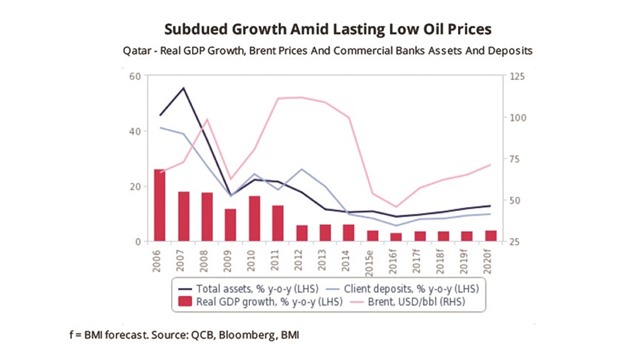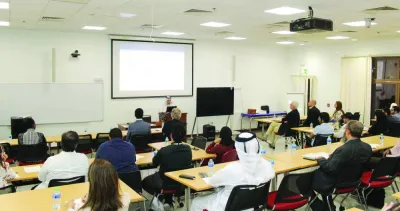Qatari banks will have to make do with the “challenging operating environment” for a few more years in view of the lower oil prices, according to an expert.
“With oil prices staying low over the coming years, we believe that the challenging environment will last through 2020 at least,” said Olivier Najar, country risk analyst (Mena) at BMI Research.
“We expect to see a gradual improvement in the situation for Qatari banks over the years, as oil prices recover moderately, but there is no getting back to the boom years of 2003-2012,” Najar told Gulf Times yesterday.
At present, government borrowing is providing some respite for the banks, but this is not sustainable,” he said.
Najar said commercial banks in Qatar would face a more challenging operating environment over the coming years, given the economic slowdown brought about by the slump in hydrocarbon prices. Increasing government borrowing will provide some opportunity for asset expansion until private lending recovers, but this new sector will be less profitable.
BMI forecasts Qatar’s real GDP growth to average 3.5% over the next two years, compared to 8.7% between 2010 and 2015. As a result, Qatari banks will face fewer lending opportunities, and hence the researcher forecasts asset expansion to average 9.6% through 2018, compared to 15.6% over the past five years.
According to BMI, Qatar’s budget balance may turn back to small surpluses by 2018, which means that government borrowing will gradually decline over the next two years, reducing lending opportunities, even as borrowing from the private sector remains relatively low. In this context, BMI said mergers could happen in the country – as was seen in the UAE – but there is “too little at present to provide a definite view” on this.
Qatari corporates and households, it said, are already borrowing less than in the past. In the first six months of 2016, credit growth in general trade, industry and consumption averaged 10.9%, compared to 25.7% a year earlier.
In contrast, credit growth in the real estate sector accelerated over the same period, with developers accelerating their investment in tourism real estate in preparation for the 2022 FIFA World Cup.
With the event still six years away, the researcher expects the real estate sector to continue outperforming over the coming quarters.
That said, opportunities in the real estate sector will be “too limited” to drive overall asset expansion for Qatari commercial banks. Rather, BMI believes that increasing government borrowing will continue to provide their lifeline over the coming quarters.
Over the past 19 months, Qatari banks saw their exposure to the public sector increase significantly. In July 2016, claims on the public sector accounted to 27% of commercial banks claims, compared to 22% in January 2015. This trend is accelerating: Between January and July 2016, claims on the public sector grew by 45% year-on-year on average, compared to 14% for the private sector, it said.
BMI believes that diversification into the public sector would erode profitability for commercial banks in Qatar. In the first six months of 2016, the average interest rate on government securities stood at 2.62%, well below the 5.98% rate that Qatari banks demand on average for private sector loans.
“The squeeze on banks’ margins is reinforced by rising funding costs,” BMI noted.
Qatar’s three-month Interbank Offered Rate (QIBOR) increased to 1.57% in July 2016, compared to 1.08% in July 2014, while the average interest rate on time and savings deposits reached 2.13% in July, compared to 1.22% two years earlier. As a result, the interest margin for Qatari banks is decreasing, and stood at 3.86% in July 2016, compared to 4.70% in July 2014, it said.
Business / Eco./Bus. News
Challenging environment to last, impacting Qatar banks’ profitability: BMI

CHALLENGING



